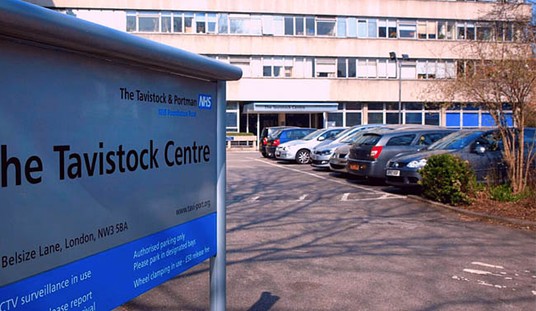The question here isn’t good news or bad news, but bad news and really bad news. Fukushima Daiichi’s reactor 2 has a sudden spike in radiation from underneath where water has pooled near the turbines, perhaps of a particular isotope that would indicate a fresh containment breach and ongoing fission reactions. CNN reports that TEPCO initially announced that the unstable iodine-134 isotope — which has a half-life of less than an hour — may have suddenly and sharply increased in the water runoff, putting workers in greater danger:
The Tokyo Electric Power Company reported earlier Sunday that water pooling in the turbine building of the plant’s No. 2 reactor was 10 million times more radioactive than normal contained a sharply elevated level of iodine-134, a short-lived isotope produced in a nuclear reaction. But Japan’s Nuclear and Industrial Safety Agency called those figures into question, and Tokyo Electric announced Sunday night that it would retest the water.
High radiation levels persisted in the Pacific Ocean waters near the seaside power plant, however, with one monitoring post reporting levels 1,850 times normal Sunday.
NISA spokesman Hidehiko Nishiyama said the surface water from the No. 2 turbine building showed 1,000 millisieverts of radiation per hour — more than 330 times the dose an average person in a developed country receives per year, and four times the limit Japan’s health ministry has set for emergency workers struggling to prevent a meltdown at the damaged plant.
However, the NISA spokesman says that the ratio reported by TEPCO may have been in error:
“We tend to feel that the data that was made public by TEPCO today is a bit strange and a bit odd,” Nishiyama said. “And I have been told TEPCO is going to re-evaluate the numbers and is going to make public the results of their re-evaluation.”
TEPCO has now retracted its earlier announcement in regards to the iodine-134, but not in the measure of radioactivity:
Tokyo Electric Power Company has retracted its announcement that 10 million times the normal density of radioactive materials had been detected in water at the Number 2 reactor of the Fukushima Daiichi nuclear plant. …
It said although the initial figure was wrong, the water still has a high level of radioactivity of 1,000 millisieverts per hour.
To give some sense of scale to this figure, normal background radiation exposure would be 2-3 millisieverts per year, so this is not a minor danger. Its source is important, though, and not a small academic matter. If iodine-134 is leaking from the reactor, it means that not only has containment been breached but also suggests that a fission reaction continues in the reactor. The presence of iodine-131 would not necessarily suggest an ongoing reaction, as it has a much longer half-life of eight days. Its presence in the water could have been from an earlier fission process, and it is already an expected contaminant after a nuclear accident.
The good news is that TEPCO has restored power to control rooms and cooling systems at the plant, including the reactor 2 building yesterday. Hopefully that will allow the workers to bring the reactors under control and at least end the risk of further contamination.







Join the conversation as a VIP Member